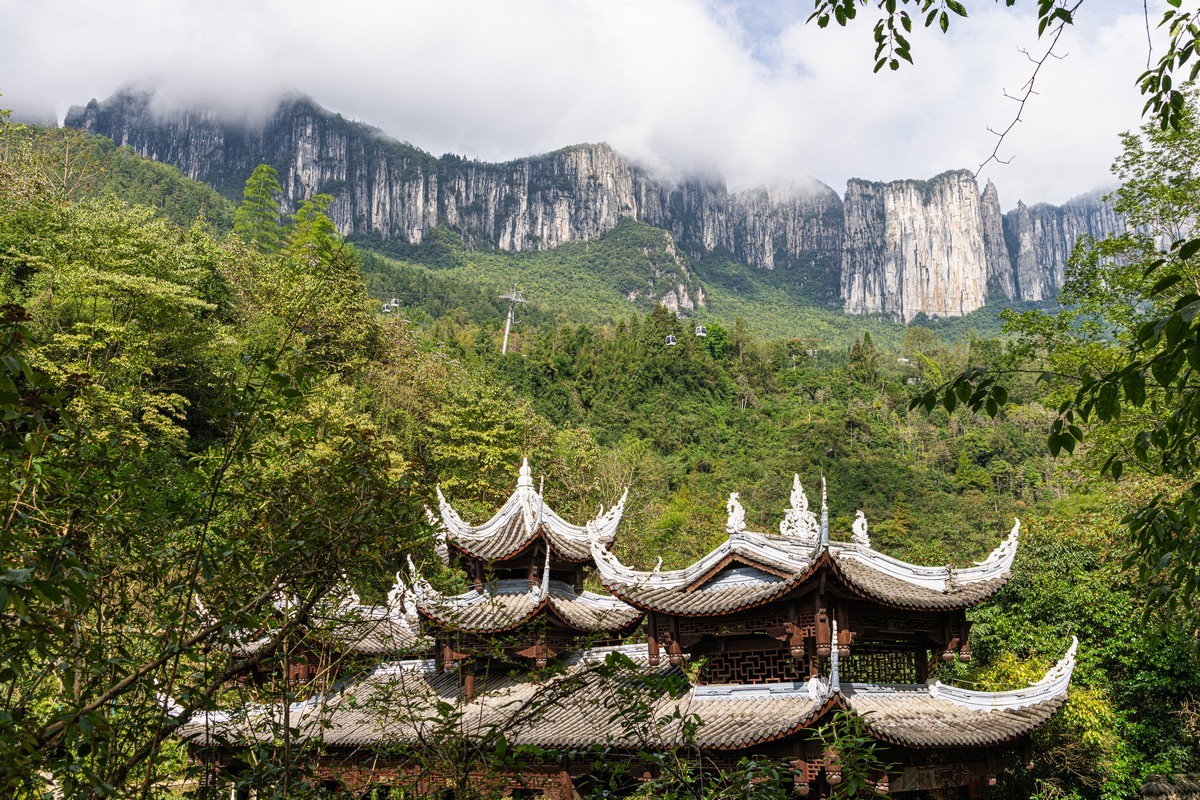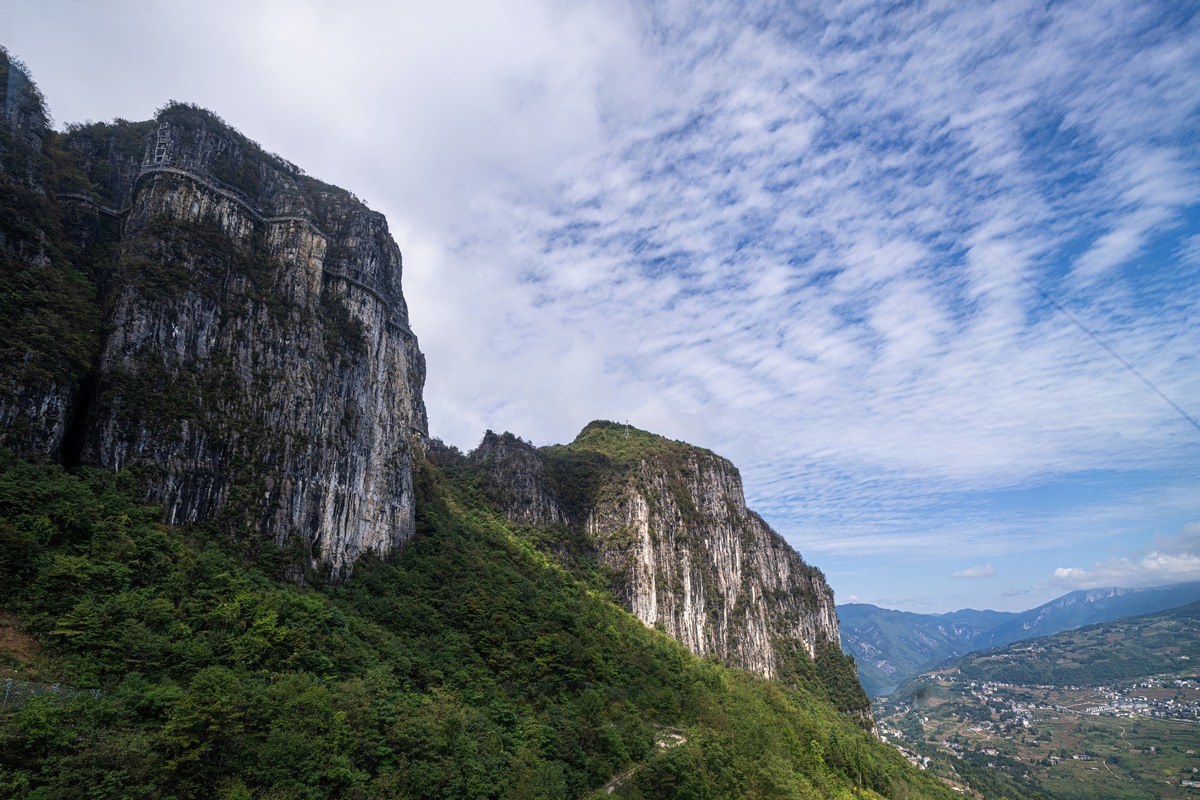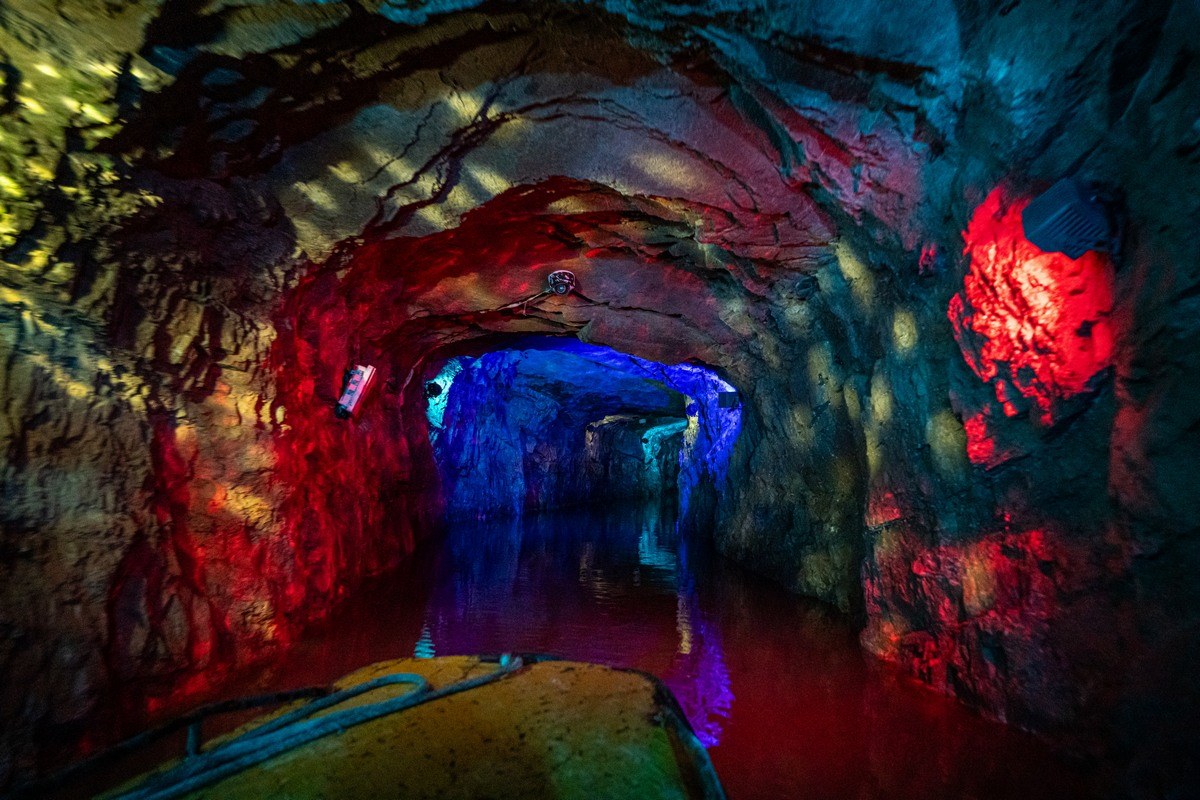December 12, 2023
China-2023: Tianmen Mountain (through the fog).
After our intensive two days checking out Wulingyuan’s rockinesses, it was time for our next touristic location; namely: Tianmen Mountain, not far from the city of Zhangjiajie (try pronouncing that after a few beers:).
And so – Tianmen Mountain, aka – 天门山, aka – Heaven’s Gate Mountain. First we got ourselves over to the mentioned Zhangjiajie (which isn’t all that far from Wulingyuan), and checked into our hotel. The hotel had been chosen strategically, for it’s right opposite where we needed to be to get transported to Tianmen Mountain – the base station of the cable-car. Here’s the view thereof from my hotel window:















